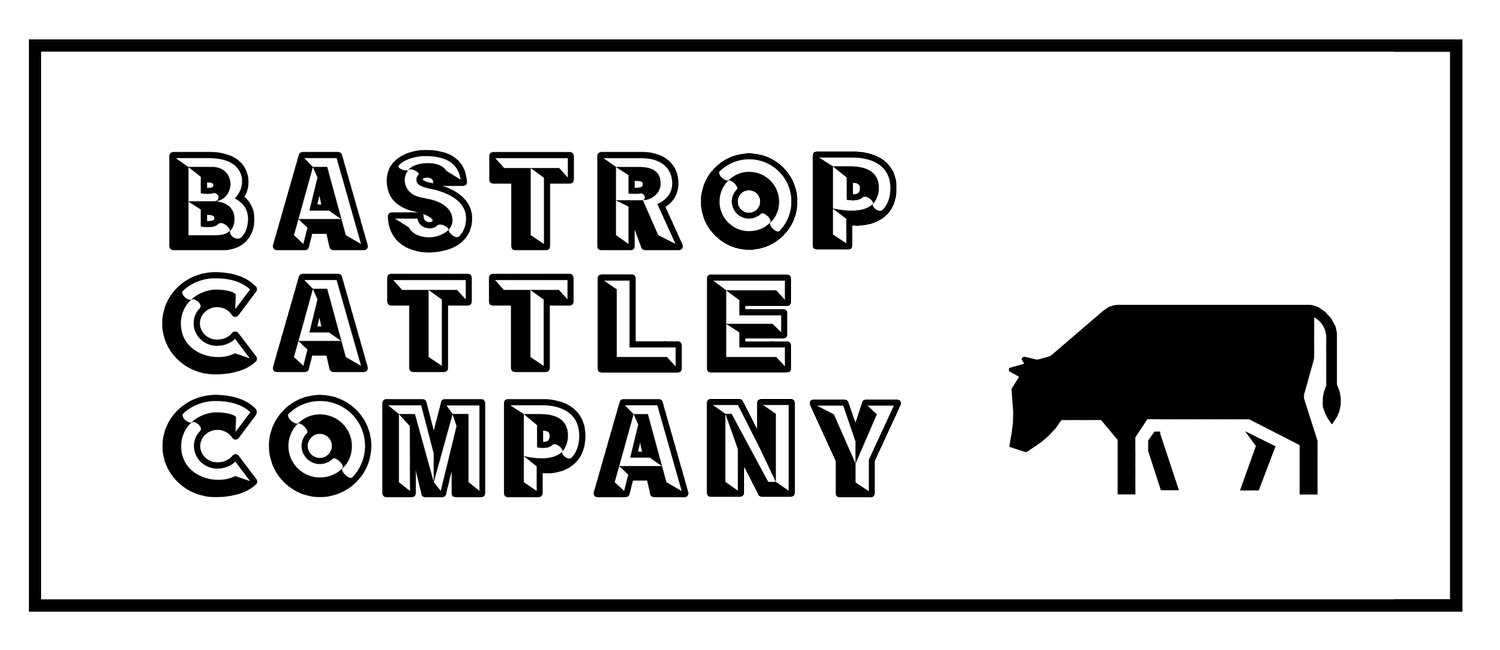What is Live Weight vs. Hanging Weight?
Is it Live or is it Hanging? - Weight I mean!
Many people are discovering the many advantages of buying their beef directly from the rancher. I know because I talk with many of you about those advantages. I also spend quite a bit of time working with many of you to craft and specify how you want your beef cut.
One of the many things that comes up when someone is first looking at a large purchase of beef is ‘how is it priced out, and what is it really costing me?’
There are many ways to buy beef. Bastrop Cattle Company makes packages and single cuts available on our retail website. We also sell bigger bulk purchases by the half and whole carcass. Buying a half or whole carcass offers the advantages of both price and ability to choose cuts and thicknesses that would not otherwise be available in grocery stores or when buying smaller amounts of beef.
However, it can sometimes be tricky to understand exactly what you are getting for your money and how much it is costing.
Live Weight Buying:
Live weight means you are literally buying the entire cow. When someone buys this way, it also usually means you, the buyer, are responsible for working directly with whatever processing plant the animal is taken to to be slaughtered and butchered at. You need to be aware of what this will entail.
First, a fair amount of the weight you just bought will disappear - the head, the guts, the lower legs, the hide. No one is cheating you! This is just what happens when you butcher. Most grass fed animals will lose between 44 and 52 percent of their live weight. A good average for figuring money purposes is that the live weight you purchased at say $2.50 a pound will be halved meaning that you actually paid $5.00 a pound for the hanging carcass. That is just the cost of the animal weight. The processing plant has its own cost -- a kill fee and processing fees (usually per pound based on the hanging weight). There may also be some additional costs from the seller for transportation of the animal to the processing plant.
The other big part of this is that you will have to create a cut page detailing out what thickness, style and variety of cuts you want. Many processors have a default one, and it’s usually what a live weight buyer would go with. Because of this, it’s possible to end up with a surplus of cuts that you don’t prefer to cook with.
The last thing to think about when buying live is packaging. Some processors will offer inexpensive butcher paper wrapping, meaning that either you have to use the meat before it gets freezer burn or vacuum seal it yourself. Many processors also offer vacuum sealed commercially frozen, but it may cost more than the other options.
To summarize, live weight buying seems like a better value on its face, but at the end of the day you don’t actually save that much money, if you save any at all! There’s also a decent amount of work on your part to get everything accomplished. It’s commonplace because it’s easier for a small rancher to just supply the beef, and leave the details to the buyer.
Hanging Weight Buying:
The other way of buying a half or whole is at the hanging weight, which is what the carcass weighs after it has been butchered. This is how we sell our half and whole animals. It’s a more accurate pricing structure since it doesn’t require calculations on weight lost versus value.
Selling a customer a half or whole by hanging weight - at least in the state of Texas - means that the work must be done in a State Inspected or USDA Inspected processing facility. This is slightly more expensive than a custom exempt butcher (i.e. small deer processors for personal consumption) but ensures that the entire process of killing, butchering and packaging must be done under the supervision of an inspector on site. We personally love the safety and security that our inspector’s work guarantees at the butcher we work with.
The big question on hanging weight is how much you lose after cutting. This is called “shrinkage” in the industry and can range between 10% to 20% of your hanging weight. Let’s talk about the factors that contribute to this. The biggest one is the selection of cuts. This is why we personally walk our customers through the cut list. Small choices like requesting trendy cuts like tri-tips or flat-irons can compromise other cuts like sirloins or chuck roasts and result in less weight back to the buyer.Other factors include dry-aging which can immediately lose 4% to 6% of the weight before cutting. The skill level of the butcher also would be an obvious factor, which is why the place you process at matters! The last factor to keep in mind is the type of animal. A leaner older steer may have more weight than our smaller animals, but the lack of fat will result in more loss of weight and older animals often need to be dry aged to get a desirable texture.
On our animals we’re proud to say we average around 10% shrinkage. We don’t need to dry age. Our butchers are incredibly skilled artisans. Best of all, we personally work through every custom cut page with our buyers. There’s no guesswork on your part!
Buying a half or whole carcass for your own use can be a very economical and satisfying way to purchase beef. However, always ask questions and make sure you are comfortable with how the process will unfold. It is a big purchase, and no one wants a freezer full of beef they don’t like!
Hope you’re having a great week!
- Pati
